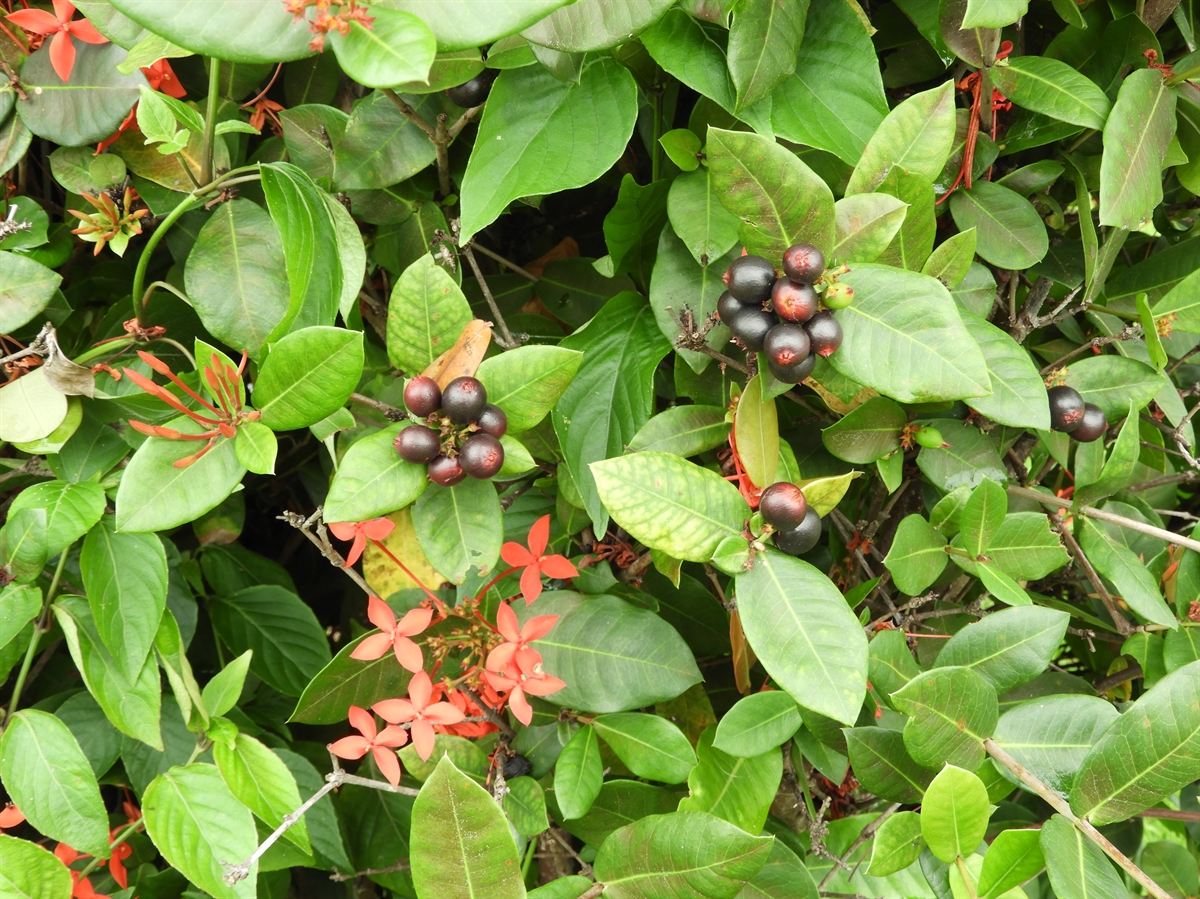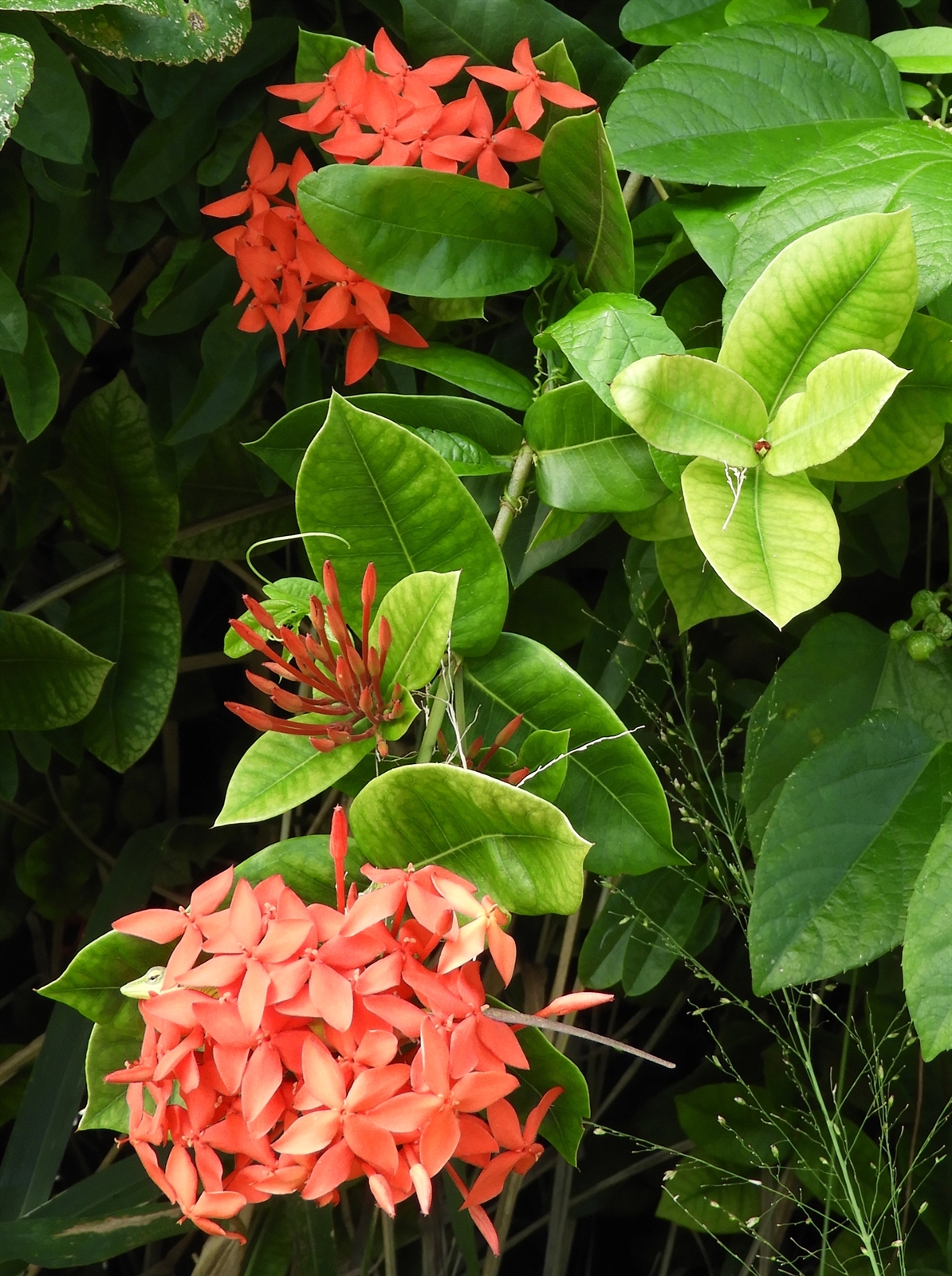Habit: Ixora chinensis grows as a shrub to 3 m in height. The leaves are arranged oppositely (often appearing 4 leaved whorled) and may or may not have petioles with triangular interpetiolar stipules. The leaves are to 15 cm in length, lanceolate to oblanceolate to elliptic, with an entire margin and an obtuse to acute leaf apex.
The complete, perfect, actinomorphic flowers are arranged in many flowered terminal cymes. There are 4 fused, with long lobed, green sepals in the calyx. There are 4 fused, elongate, pink to orange to red petals in the corolla. There are 4 stamens. The ovary is inferior with a single locule containing 2-3 ovules. The fruit is a drupe that is dark purple/black at maturity.
Habitat: Ixora chinensis grows in Human Altered environments (yards, gardens, roadsides).
Distribution: Ixora chinensis is NOT native to the Lucayan Archipelago but occurs throughout the islands. It is native to China and parts of south east Asia. It has been introduced in tropical and subtropical regions of the world.
Medicinal/Cultural/Economic usage: Ixora chinensis is not known to be used medicinally in Lucayan Archipelago.

